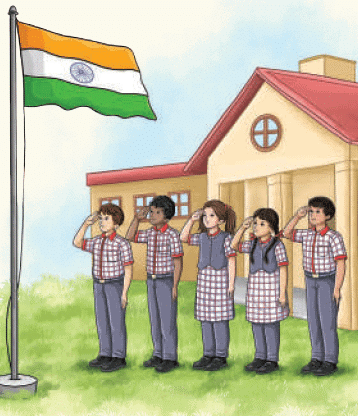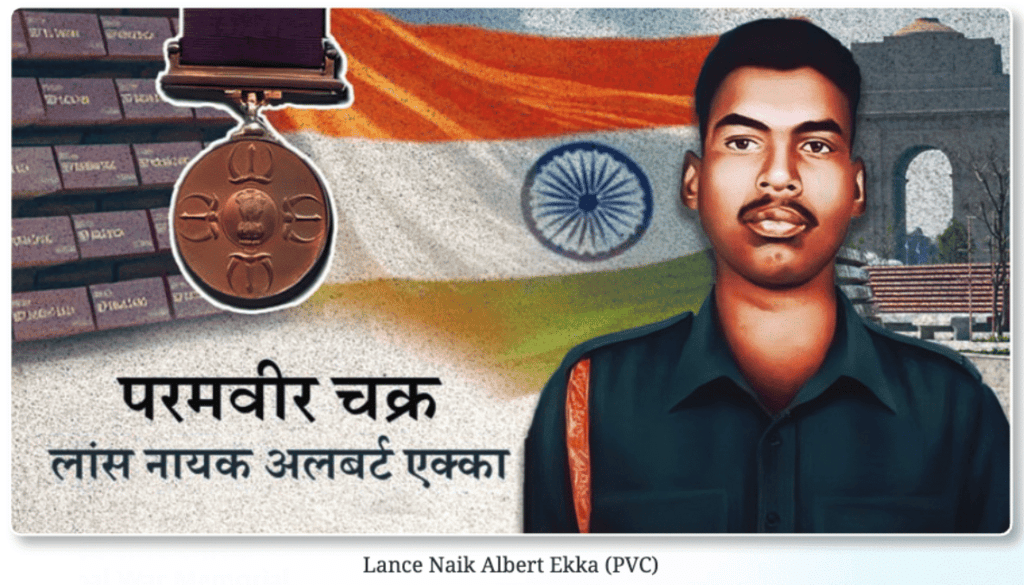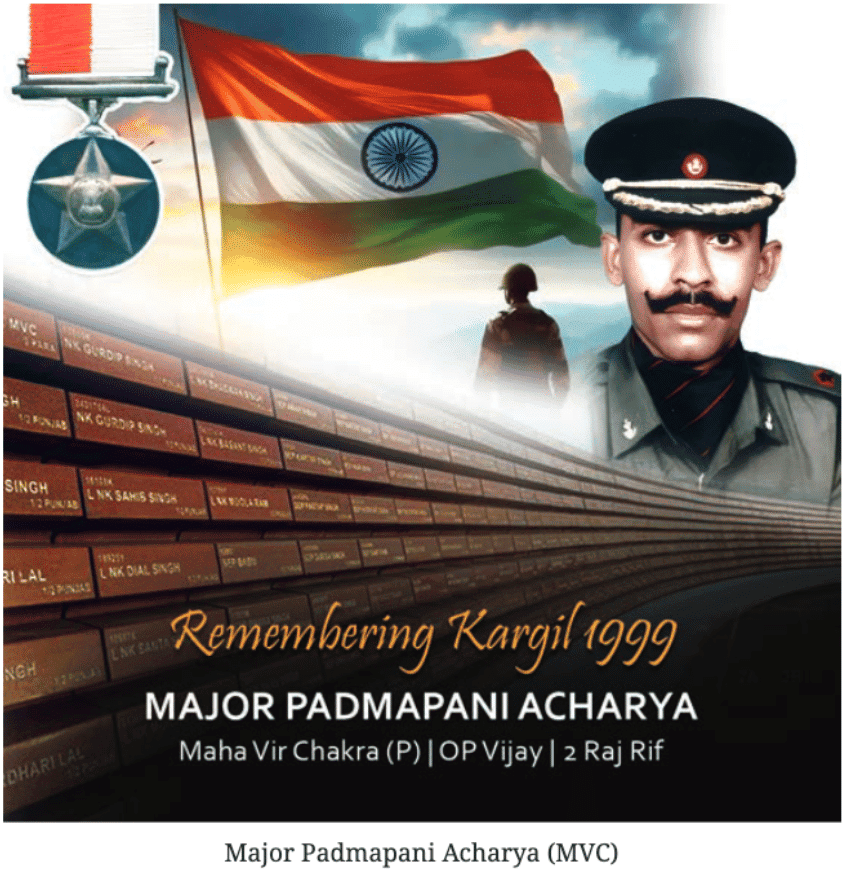A Homage to Our Brave Soldiers Class 7 Notes English Unit 5 Free PDF
| Table of contents |

|
| Introduction |

|
| Explanation of the Story |

|
| Moral of the Story |

|
| Difficult Words |

|
Introduction
- This lesson is a letter exchange between two friends, Soumya and Ananda, who share their feelings about brave soldiers who fought for India.
- Soumya writes about her visit to the National War Memorial in New Delhi, describing how it honours soldiers who died in wars.
- She shares stories of heroes and the memorial’s features, like the eternal flame and circles representing bravery and sacrifice.
- Ananda replies, expressing gratitude and inspiration to join the Armed Forces.
- The lesson teaches us to respect and remember soldiers’ sacrifices for our freedom.

Explanation of the Story
The story is told through two letters between Soumya, who lives in Bengaluru, and Ananda, who lives in Chandigarh. It focuses on their thoughts about soldiers and Soumya’s visit to the National War Memorial.
Soumya’s Letter (14 April):
Soumya writes to Ananda, reminding him of their earlier conversation about war and peace. She reflects on India's journey—its fight for independence and the wars fought after 1947 to defend the nation. Curious about the brave soldiers who sacrificed their lives, Soumya finds some answers during her school trip to New Delhi, where she visits the National War Memorial.
Her teacher explains that the memorial, built between April 2018 and February 2019 near India Gate and inaugurated by Prime Minister Narendra Modi, honours soldiers who died in conflicts such as the Indo-China War (1962), Indo-Pak Wars (1965 and 1971), and the Kargil War (1999). The memorial holds 29,000 tablets with over 26,000 names of fallen heroes.
Soumya also learns about bravery awards like the Param Vir Chakra (PVC), awarded to 21 soldiers, starting with Major Somnath Sharma in 1947. Other notable heroes include Lance Naik Albert Ekka, Flying Officer Nirmal Jit Singh Sekhon, Second Lieutenant Arun Khetarpal, and Major Hoshiar Singh. Captain Mahendra Nath Mulla, a Navy officer, received the Maha Vir Chakra (MVC).

Inspired by the story of Lance Naik Albert Ekka, who bravely fought and died in the 1971 war despite serious injuries, Soumya feels a deep desire to one day serve the nation like him.
The National War Memorial has several symbolic sections:
Amar Chakra (Circle of Immortality): Home to the eternal flame, symbolising that soldiers' spirits live on.
Veerta Chakra (Circle of Bravery): Displays six bronze murals of heroic battles.
Tyag Chakra (Circle of Sacrifice): Walls shaped like a Chakravyuh formation, listing soldiers' names.
Raksha Chakra (Circle of Protection): Rows of trees representing the protectors of the nation.
Soumya describes the memorial’s beauty—the respectful wreaths, the lighting that changes from dawn to dusk, and the pride mixed with sadness she felt. Her class is preparing presentations about soldiers, and she chooses Major Padmapani Acharya, a 1999 Kargil War hero who, despite severe injuries, led his men to victory and was posthumously awarded the MVC. Soumya ends her letter excitedly, sharing a website link about the memorial.
Ananda’s Letter (24 April)
Ananda is deeply moved by Soumya’s letter. He praises her vivid description and agrees that the National War Memorial is not just a monument but a symbol of gratitude for those who gave their lives for India’s freedom. Inspired by her experience, he too dreams of joining the Armed Forces.
He recalls visiting a war memorial in Chandigarh’s Bougainvillaea Garden, where people laid flowers to honour fallen soldiers. This visit reminds him of the famous Hindi poem Pushp ki Abhilasha by Makhanlal Chaturvedi, where a flower wishes to fall on the path of brave soldiers rather than be used for mere decoration.
Ananda shares his admiration for Captain Anuj Nayyar, another MVC awardee from the Kargil War, whose mother wrote a heartfelt book about him. Ananda mentions an interview where Captain Nayyar’s mother talks about the pain and pride of keeping her son's memory alive.

Excited about the National War Memorial and Museum app, which provides information in 21 languages and showcases murals, Ananda expresses his wish to visit the memorial one day. He also plans to suggest creating a collage of inspiring heroes at school.
Before ending, Ananda warmly shares his love for philately—stamp collecting—and appreciates Soumya’s beautifully stamped letters. He concludes by telling her that her letter truly inspired him.
Moral of the Story
- The lesson teaches us to be thankful for soldiers who gave their lives so we can live in a free and safe country.
- It encourages us to honour their bravery by remembering their stories, visiting memorials, and learning about their sacrifices.
- The story also inspires us to be courageous, serve our nation, and live in a way that respects the freedom soldiers fought for.
Difficult Words
Here are the meanings of some words from the lesson, explained simply:
- Homage: Showing respect publicly for someone.
- Memorial: A place or statue built to remember people who died.
- Patriotism: Love and loyalty for one’s country.
- Sacrifices: Giving up something important, like life, for a cause.
- Inaugurated: Officially opened or started.
- Tribute: An act to show respect or gratitude.
- Etched: Carved or written permanently, like names on stone.
- Gallantry: Great courage, especially in battle.
- Posthumously: After someone has died.
- Citation: A description of someone’s brave actions for an award.
- Awestruck: Feeling amazed and impressed.
- Commemorates: Honors and remembers officially.
- Obelisk: A tall, pointed stone pillar.
- Wreaths: Rings of flowers used to show respect for the dead.
- Interminable: Never-ending, like an eternal flame.
- Murals: Large paintings or designs on walls.
- Valour: Great bravery in danger.
- Solemn: Serious and respectful.
- Sovereignty: A country’s independence and control over itself.
- Philately: The hobby of collecting stamps.
FAQs on A Homage to Our Brave Soldiers Class 7 Notes English Unit 5 Free PDF
| 1. What is the main theme of "A Homage to Our Brave Soldiers"? |  |
| 2. Why is it important to pay homage to soldiers? |  |
| 3. What moral lessons can be derived from the story? |  |
| 4. What are some difficult words found in the chapter, and what do they mean? |  |
| 5. How can we show our appreciation for soldiers in our daily lives? |  |















